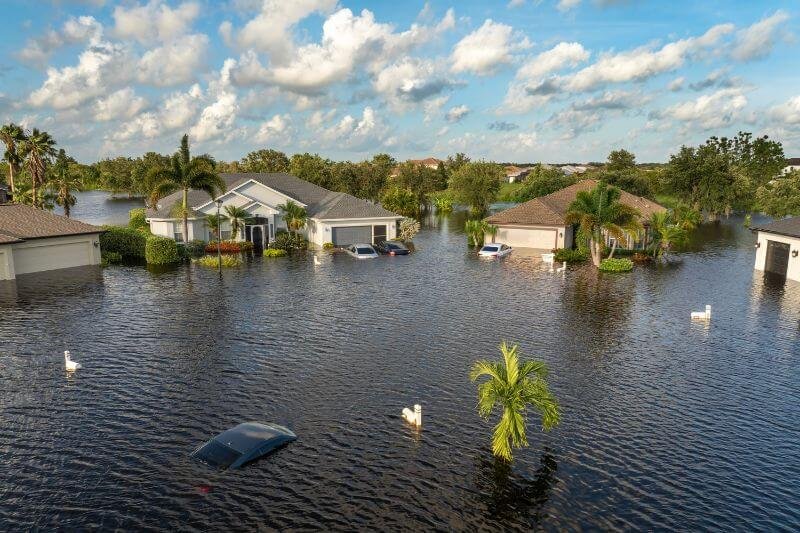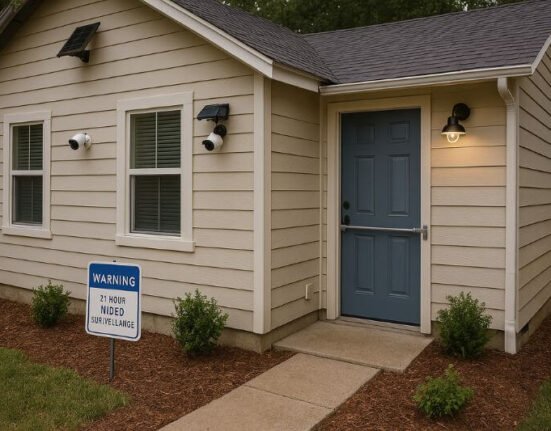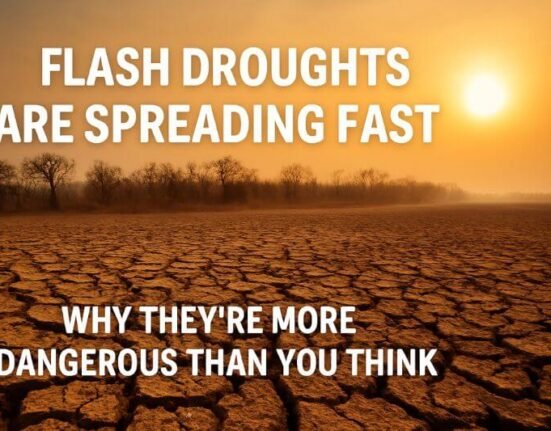Florida’s Increasingly Severe Flooding Crisis
Flooding in Florida has intensified significantly in recent years, transforming the once occasional event into a persistent crisis affecting millions.
Florida, renowned for its sunny weather and coastal lifestyle, is experiencing unprecedented climate chaos. Severe flooding events are now frequent occurrences rather than rare disasters. From Miami and Fort Lauderdale to Tampa and Jacksonville, rising sea levels combined with intense storms have made flooding a persistent reality. In this article, we explore why flooding has become Florida’s “new normal” and discuss essential survival strategies for individuals and communities facing this growing threat.
Understanding Florida’s Escalating Flood Risks
Rising Sea Levels: An Ongoing Threat
The most prominent factor contributing to Florida’s flooding crisis is rising sea levels driven by global climate change. Over the past two decades, the sea level around Florida has risen significantly faster than global averages, eroding coastlines, contaminating freshwater supplies, and increasing the frequency and severity of flooding events, especially during high tides and storms.
Intensifying Storm Patterns
Florida is no stranger to hurricanes, but recent storms have intensified dramatically in scale and destructive power. Climate scientists attribute this increase to warmer ocean temperatures and atmospheric changes, fueling stronger hurricanes, heavier rainfall, and more destructive storm surges. The result is extensive flooding even in areas previously considered safe.
Urban Development and Poor Drainage
Rapid urban development and insufficient infrastructure investment have exacerbated Florida’s flooding issues. Many cities are built on low-lying terrain, heavily paved with asphalt and concrete, limiting natural water absorption and exacerbating runoff. Outdated drainage systems quickly become overwhelmed during storms, increasing flood risks significantly.
Real-Life Examples: Flooding Events Reshaping Florida’s Landscape
Miami’s Recurrent Flooding Crisis
Miami has become emblematic of Florida’s flooding woes. Regular “sunny day flooding” now occurs during high tides, even without storms, damaging homes, disrupting traffic, and affecting local businesses. Hurricane Irma in 2017 and Ian in 2022 highlighted the city’s vulnerability, causing billions of dollars in damages and demonstrating the catastrophic consequences of inadequate flood defenses.
Jacksonville and Tampa: Vulnerable Cities Under Threat
Jacksonville and Tampa also face severe flooding risks. During recent hurricanes, large areas of these cities remained underwater for days, causing extensive property damage and forcing thousands of evacuations. Both cities are now actively investing in significant flood prevention infrastructure, underscoring the critical need for improved preparedness and resilience planning.
Survival Implications: Preparing for Persistent Flooding
Building Flood Resilient Homes
Survival preparedness in flood-prone areas requires proactive home fortifications. Elevating structures, installing flood barriers, sump pumps, and flood-resistant building materials significantly reduce potential damage. Additionally, homeowners should consider waterproof storage options and resilient landscaping techniques designed to mitigate flooding.
Emergency Evacuation Plans
Flood survival relies heavily on robust evacuation planning. Individuals and communities should maintain updated evacuation maps, have multiple predetermined escape routes, and prepare emergency kits containing essential supplies such as food, water, medicine, and important documents. Regular evacuation drills can significantly enhance readiness and safety during actual emergencies.
Community-based Flood Management
Communities can collectively reduce flood impact by investing in local flood management strategies. Creating effective drainage systems, installing rain gardens, and establishing green infrastructure projects can dramatically reduce flooding severity. Strong community cooperation enhances mutual aid during crises, improving overall resilience and survivability.
Governmental and Community Responses to Flooding
Infrastructure Investments and Urban Planning
Local and state governments have begun prioritizing large-scale flood mitigation projects, such as elevated seawalls, improved drainage infrastructure, and expansive wetland restoration. These investments aim to create flood-resistant communities better able to withstand and rapidly recover from future flooding events.
Early Warning and Communication Systems
Effective early warning systems and community communication networks are vital for flood preparedness. Upgraded emergency communication channels, including mobile alerts, automated warning systems, and localized radio broadcasts, help ensure timely evacuation and better-informed decision-making by residents during flood events.
Insurance and Economic Adaptation
Florida residents increasingly recognize flood insurance as essential protection. Government-backed programs and private insurers are expanding policies tailored to frequent flooding, providing critical financial support and stability for affected communities. Economic adaptation through flood insurance contributes to long-term resilience and stability.
Future Projections and Long-term Adaptation Strategies
Adapting to a New Climate Reality
Scientific projections indicate flooding in Florida will become more frequent and severe. To adapt effectively, policymakers, communities, and individuals must rethink urban design, invest in resilient infrastructure, and adopt sustainable living practices. Embracing innovation, such as floating homes, flood-resistant architecture, and advanced water management technologies, offers promising solutions for future survival.
Building Sustainable Resilience
Long-term flood resilience requires holistic approaches combining infrastructure improvements, environmental conservation, and community engagement. Restoring natural barriers like mangroves and wetlands significantly reduces storm surges and flood impacts. Furthermore, community education initiatives empower residents with essential flood survival knowledge and skills.
Global Cooperation and Climate Mitigation
Ultimately, addressing Florida’s flooding crisis demands global climate cooperation. Reducing greenhouse gas emissions, adhering to international climate agreements, and supporting global sustainability initiatives directly contribute to mitigating future flooding impacts, not only in Florida but worldwide.
Essential Survival Tips for Residents Facing Florida Flooding
Immediate Preparedness Actions
- Regularly update emergency evacuation plans.
- Store emergency supplies in waterproof containers.
- Elevate electrical appliances and valuable belongings.
Flood-Proofing Homes and Properties
- Install flood barriers and sump pumps.
- Use flood-resistant construction materials.
- Consider raising the home’s foundation or essential utilities.
Staying Informed and Connected
- Subscribe to local emergency notifications.
- Maintain reliable communication tools such as portable radios or satellite phones.
- Regularly review flood preparedness information from trusted sources.
Building Community Networks
- Establish neighborhood preparedness groups.
- Coordinate community flood drills and education programs.
- Share resources and support vulnerable residents during crises.
Embracing Survival Strategies for Florida’s New Normal
Florida’s climate chaos, particularly its persistent flooding problem, is not temporary—it’s now a permanent reality. Understanding the causes, preparing for emergencies, and adopting innovative, long-term strategies are critical to survival in this new climate era. Collective action at individual, community, and governmental levels is necessary to reduce risks and safeguard the future.
While Florida’s flooding poses daunting challenges, proactive preparedness, sustainable living practices, and comprehensive flood management strategies significantly improve resilience. Facing flooding as the new normal requires immediate adaptation—our survival depends on the actions taken today.















